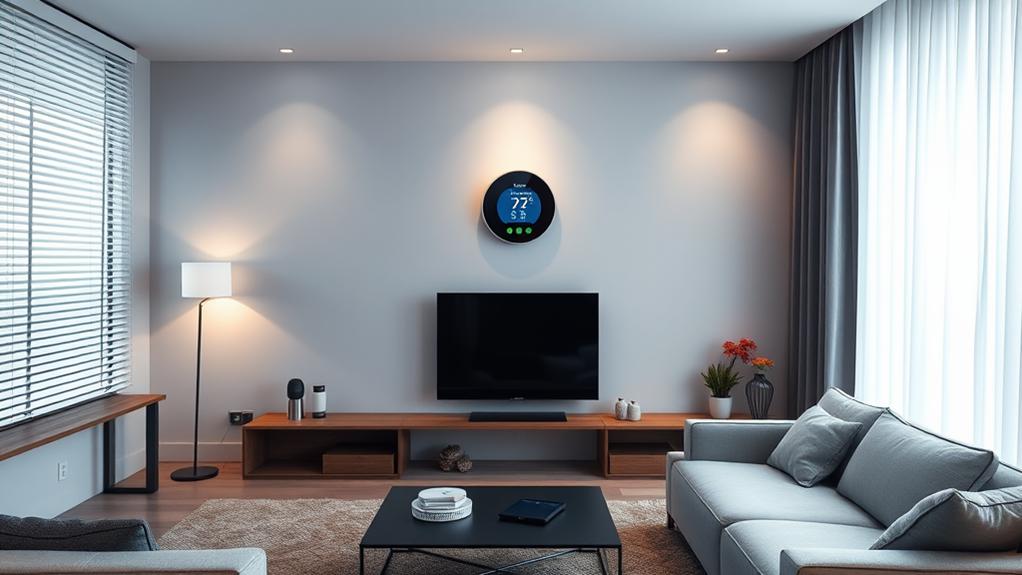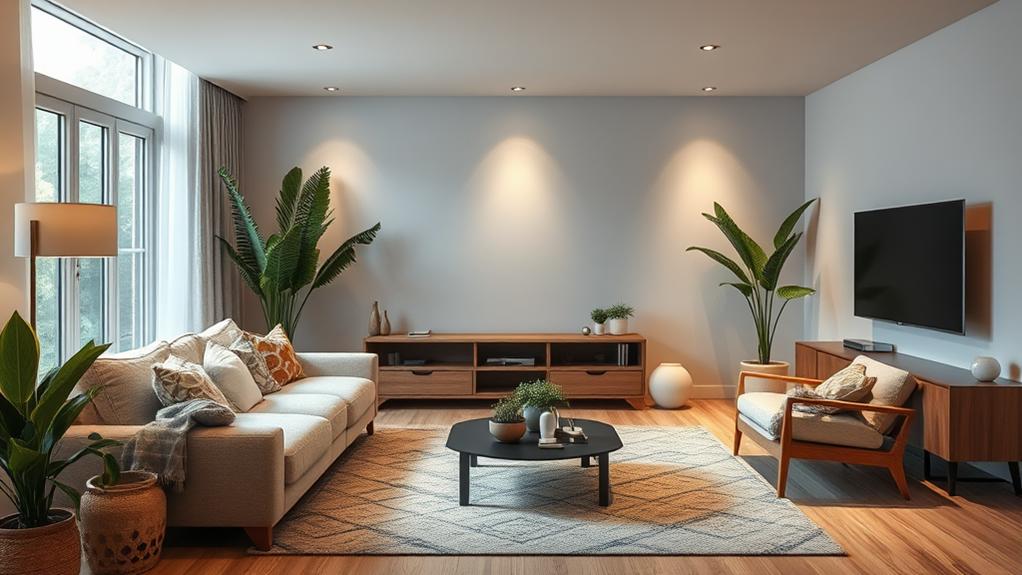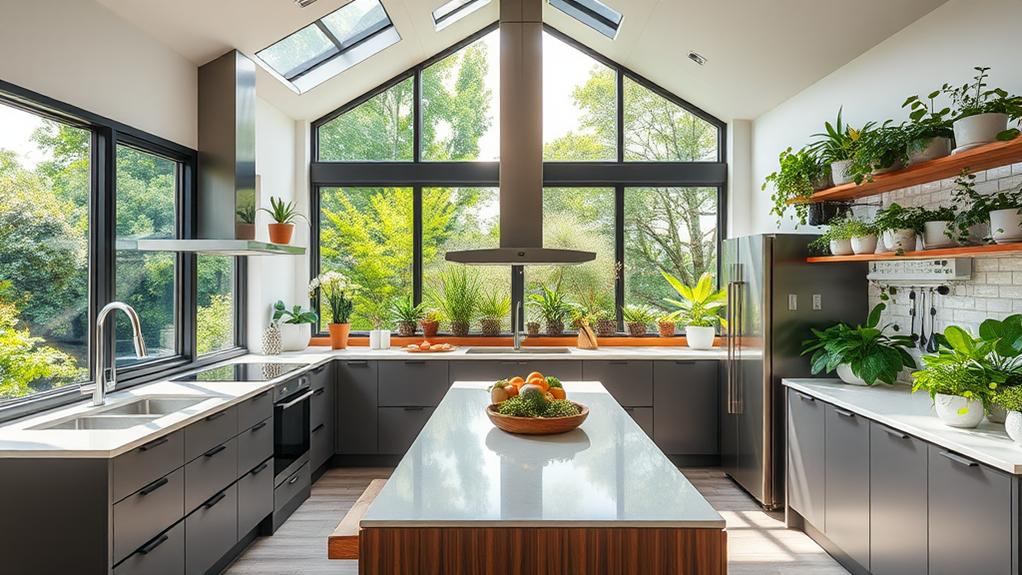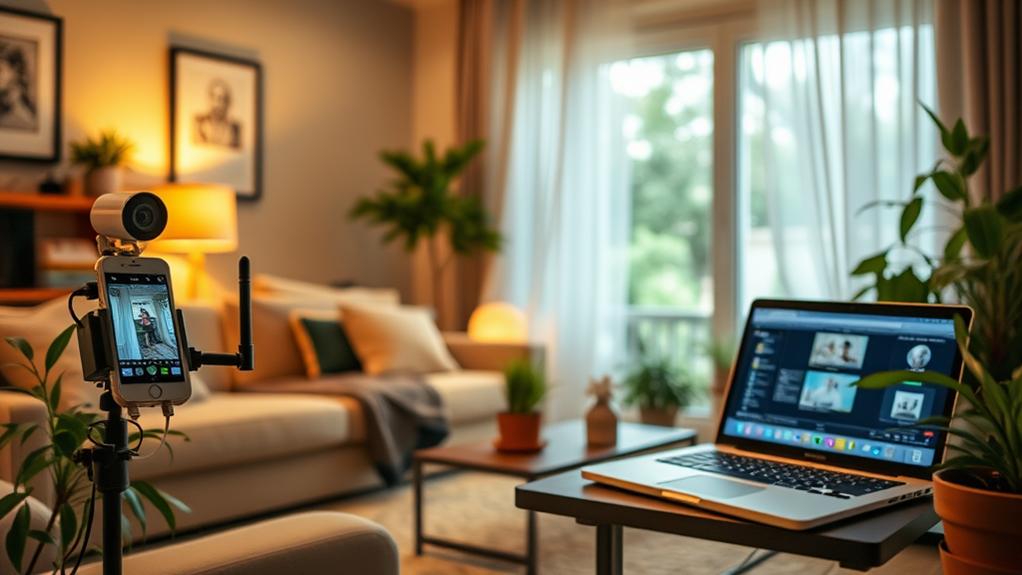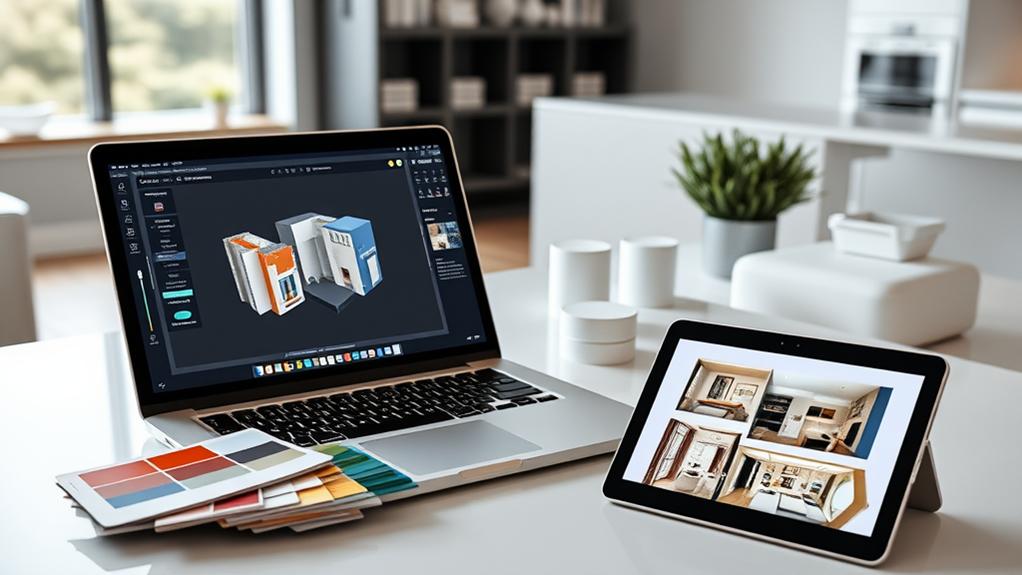Upgrading your home with automation is like laying the first brick of a solid foundation—once it's in place, everything else becomes easier. You might wonder why automation should be your starting point, especially when there are so many other options available. The truth is, integrating smart technology not only brings convenience but also sets the stage for future enhancements. As you explore this topic, consider how automation can reshape your daily life and what that means for your home's potential.
Benefits of Home Automation
When you embrace home automation, you open up a world of convenience and efficiency that transforms your daily routines.
Imagine controlling your lights, thermostat, and security systems all from your smartphone. You don't have to worry about whether you left the lights on or the door ajar; you can check and adjust everything with a simple tap.
Home automation saves you time. You can set schedules for your devices, so they automatically adjust to your lifestyle.
For instance, your thermostat can lower the temperature while you're at work, ensuring you return to a comfortable home without wasting energy.
Safety is another major benefit. Automated security systems provide real-time alerts and remote monitoring, giving you peace of mind when you're away.
You can even receive notifications if someone approaches your home.
Essential Smart Devices
The convenience of essential smart devices can greatly enhance your home automation experience. These devices not only simplify daily tasks but also improve your home's efficiency and security.
Start with smart lighting; it lets you control your lights remotely or set schedules to match your routine. You can save energy and create the perfect ambiance for any occasion.
Next, consider smart thermostats. They learn your preferences over time and adjust the temperature accordingly, keeping you comfortable while lowering your energy bills.
Smart security cameras provide peace of mind by allowing you to monitor your home from anywhere. You'll receive alerts on your phone if any unusual activity is detected.
Don't overlook smart plugs and switches. They enable you to control any device plugged into them, turning everyday appliances into smart ones.
Choosing the Right System
Choosing the right home automation system can feel overwhelming, given the multitude of options available today. To simplify your decision, consider your specific needs, budget, and compatibility with existing devices. Start by identifying which areas of your home you'd like to automate, such as lighting, security, or climate control.
Next, evaluate the following factors to help narrow down your choices:
| Feature | Considerations |
|---|---|
| Ease of Use | User-friendly interfaces matter. |
| Compatibility | Verify it works with your devices. |
| Scalability | Can you add more devices later? |
| Security | Look for robust data protection. |
| Support | Check for reliable customer service. |
Integrating Automation With Design
Integrating automation into your home design can elevate both functionality and aesthetics, creating a seamless living environment. You'll want to reflect on how technology can enhance the spaces you use daily. For instance, smart lighting systems can adjust brightness based on the time of day or your mood, adding both convenience and ambiance.
Think about how automation can blend with your existing decor. Choose devices that complement your style—sleek, modern designs can enhance a contemporary home, while vintage-inspired smart devices can fit well in a rustic setting.
Additionally, contemplate the placement of your automated systems. You'll want them to be accessible but discreet, ensuring they don't disrupt your design flow.
Don't forget about the importance of user experience. Use intuitive interfaces that make controlling your home easy for everyone. Voice-activated assistants can add a futuristic touch while simplifying daily tasks.
Most importantly, keep in mind that automation should work for you, not overwhelm your space. By thoughtfully integrating these technologies, you can create a home that's not just smart but also beautifully designed. This harmony between style and function will enhance your living experience for years to come.
DIY Installation Tips
When tackling DIY installation for home automation, it's essential to start with a clear plan. Identify which devices you want to install and how they'll integrate into your current setup. This proactive approach saves you time and minimizes frustration.
Here are some tips to help you through the process:
- Research your devices: Understand the specifications and requirements of each device. This knowledge will help you avoid compatibility issues.
- Check your Wi-Fi coverage: Confirm your Wi-Fi signal is strong in the areas where you plan to install devices. You might need a range extender for ideal performance.
- Gather necessary tools: Before starting, collect all the tools you might need, such as screwdrivers, pliers, and a level. Having everything on hand keeps the workflow smooth.
- Follow instructions carefully: Each device comes with a user manual. Read it thoroughly and follow the steps closely for a successful installation.
Future-Proofing Your Home
After successfully installing your home automation devices, the next step is to think about future-proofing your home. You want to guarantee your investment stays relevant and functional as technology evolves.
Start by choosing devices that support the latest standards, like Zigbee or Z-Wave, which enhance compatibility across various brands. This way, you can easily add new devices without worrying about integration issues.
Consider modular systems that allow for upgrades rather than complete replacements. For example, smart lighting systems can often be expanded with new fixtures or bulbs without needing to overhaul your setup.
Additionally, opt for devices that receive regular software updates. This keeps your security features sharp and introduces new functionalities over time.
You should also prioritize scalability. As your lifestyle changes, your home should adapt too. Think about your future needs—whether that means more security cameras, smart appliances, or energy-efficient devices—and plan accordingly.
Conclusion
Imagine walking into a home that knows your preferences—where gentle lighting greets you, the temperature feels just right, and security is always a whisper away. By starting with automation, you're not just upgrading your space; you're crafting an oasis of comfort and control. Embrace the convenience, efficiency, and peace of mind that smart technology offers, and watch as your home transforms into a sanctuary tailored to your lifestyle. The future is bright, and it's waiting for you to take the leap.







